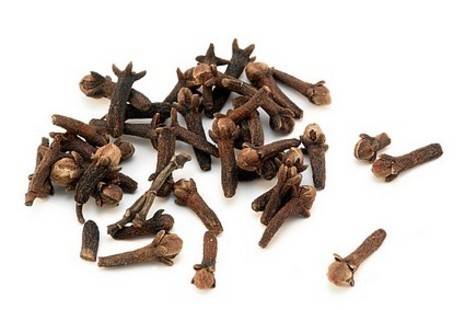Spices are the dried seeds, fruits, or berries of plants and vegetables. [Dried herbs are the dried leaves, stems, or flowers of plants-and are rediculously inferior to their fresh counterparts.] So, throw away your 30-year-old rusty jar of nutmeg, and embrace the flavors of the world. There’s good reason the explorers of the late Middle Ages traveled the world, and started wars, for this stuff.
A word about whole spices:
Buying whole spices, then toasting, and grinding or grating is preferable to purchasing pre-ground spices. The flavor is superior, they’ll last much longer, and they’re usually cheaper. Look for whole spices in plastic containers or envelopes, as opposed to glass bottles; you’ll usually get twice as much spice content for half the price, as most of the price is in the packaging.
To grind your spices: grab a new electric coffee grinder (only 20 bones), and designate it only for spice grinding. To clean your grinder, wipe it with a barely damp paper towel. If necessary, grind up a slice of bread or a 1/4 cup of raw white rice, which will absorb the dust, oils, and the flavors of the spices.
Store in a cool, dark place (away from your oven and cooktop). Ground spices and dried herbs last only six months in the most ideal storage condition. Whole seeds will last much longer, and pods such as nutmeg and cardamom will last more than 20 years-which works out, because you know you keep your spices that long anyways.

Salt
As most recipes advise, salt is generally added “to taste.” However, through the process of osmosis, salinity is an extremely important element to aiding in chemical reactions in the kitchen. For example, when cooking onions, if deep carmelization is desired, do not add salt until significant browning has occurred, as salt will draw out the liquid, and the onions will steam. And the converse holds true: if quick softening is desired, and no browning (called a ‘sweat’ as opposed to a sauté), adding some salt at the beginning will speed up the process.
Sea Salts have long been esteemed for there flavor, but are usually only available in most American markets in super fine grains, or large, course grains. I find these large grains a bit too crunchy, so I opt for the medium grain kosher salt, which has fine flavor and a great texture.

Black Pepper
Black pepper are berries from a vine in regions near the equator. They are picked fresh, and then dried in the sun until crunchy and black. Grinding fresh in a designated pepper mill is the cheapest and most effective upgrade you’ll make to your kitchen. Pepper can also be crushed under a heavy skillet or with a rolling pin or empty wine bottle, for when a coarser texture is needed, such as steak au poivre.
 Cardamom
CardamomBuy Cardamom whole, in its green seed pod. To use, break the pods open with the back of a knife, and remove the small black seeds, and grind. Store sealed in a cool, dark place, and the whole pods will last at least 5 years.
Uses: Essential in Indian vegetable and meat dishes, and in the intense, thick coffees of the Middle East, Turkey, and Greece. Also used in the Old World desserts of Europe, such as cookies, cakes, pies, and buns.

Cinnamon
What Americans think of cinnamon is actually Cassia, the bark of an Asian evergreen tree. Choose Grade A “cinnamon” when ground, or Mexican Canela in stick form. Perfect for spicy desserts, teas and hot drinks, Mexican meat dishes, and Greek/Eastern Mediterranean tomato sauces.
 Chili Powder
Chili PowderUsually consists of 75% ground, dried chiles, with oregano, cumin, onion powder, and garlic powder, as well as maltadextrose and silica dioxide. If your committed to using chili powder as a base for chili, consider buying a specialty brand from a small company. Using whole ground chiles (which would then be spelled chile powder), such as Ancho chile powder (dried poblanos, little heat) or Chipotle chile powder (smoked and dried jalapeños, significant heat) is more ideal, as you can add your own cumin, oregano, and cayenne or red chili flakes for heat.
Uses: Bases for chili and soups, in spice rubs, mojos, and marinades, and Southwestern vegetable and breakfast dishes.
 Coriander
CorianderCoriander is the seed of the Cilantro plant, and has a bright, citrusy flavor that goes perfectly with fresh ginger. The seeds are an essential ingredient in garam masala and Indian curries. Buy coriander seeds whole (in bulk- you’ll use them quickly), and toast and grind in small batches.
Uses: Flavoring for vegetables, meats, and sauces in most of the cuisines outside Western Europe (except in Portugual): Latin American, Caribbean, American Southwest, Southeast Asian, Cantonese, African, Middle Eastern, and the Western Mediterranean.

Cloves
Cloves are the dried flower buds of a particular evergreen tree, whose strong, peppery flavor is used for both sweet and savory dishes.
Uses: Ubiquitous in studding hams and roasted pork dishes, in Mexican meat marinades and moles, and in American barbecue sauces and curing/pickling liquids. Use sparingly, and grind fresh whenever possible.
Volume I Technique: Toasting
Toasting spices brings out all the essential oils, making their flavor fresh and effective. Purchase whole spices, and slowly heat them in a dry skillet (no oil) over a medium flame. Shake vigorously and often, until fragrant, about 2-4 minutes. Most recommended for: cumin, coriander, fennel seeds, mustard seeds, and even whole peppercorns.
Check out Volume II here, if you please.
